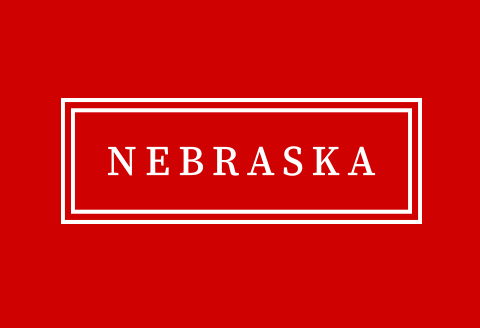Libraries, University of Nebraska-Lincoln
Document Type
Article
Citation
REFERENCES
Alcock, J. (2011). Strategic marketing in academic libraries: An examination of current practice (Master’s thesis, Aberystwyth University, U.K.).Retrieved from http://cadair .aber.ac.uk/ dspace/bitstream /handle/2160/7732/jo+alcock+st ategic+ marketing+in+academic +libraries.pdf?sequence=1
Aliu, I.&Eneh,C,(2011).The relevance of communication skills to library services. Journal of information and knowledge management, 2(2), 1-11.
Alvarez,C.(2017).Lean customer development: Building products your customers will buy. Sebastopol, CA:O’Reilly Media.
Bamidele, I., Omeluzor, S., Imam, A. & Amadi, H. (2013). Training of library assistants in academic library: A study of Babcock University Library, Nigeria. Sage Open, 1-10. doi: 10.1177/2158244013503964.
Bavarsad, B. & Hosseinipour, G. (2013) Studying the factors affecting the customers relations management (CRM) in maroon petrochemical company. Interdisciplinary Journal of Contemporary Research in Business, 4 (11):845. Retrieved fromwww.ijcrb.webs.com
Blue Venn (2014). Segmentation white paper. Retrieved from www.Blue venn.com
Broady-Preston, J., Felice, J. & Marshall, S. (2006) Building better customer relationship: Case studies from Malta and UK. Journal of Library management, 27 (6/7), 430-445.
Business dictionary (2018). Customer retention Retrieved from http://www.businessdictionary.com/ definition/customer retention. html
Business dictionary (2018). Customerization Retrieved from http://www.businessdictionary.com/ definition/customerization.html
Buttle, F. (2009). Customers relationship management: concepts and technologies (2nd ed.). Burlington: Elsevier
Chen, J. & Popovich, K. (2003). Understanding customer relationship management (CRM): People, processes and technology. Business Process Management Journal, 95,672-688.
Garvin, J. (2015). Customer development strategy. Retrieved from www.gaebler. com
Gbadeyan, A. (2010). Customer relationship management and hospital service quality in Nigeria. Africa Research Review, 4 (2),168-184. Retrieved from www.afrrevjo.com
Jankowska, M., Hertel, K, Young, N. (2006). Improving library services quality to graduate student: Libqual +TM survey result in practical settings. Libraries and the Academy, 6 (1), 59-76
Kotler, P. & Armstrong, G. (2010). Principles of Marketing (13thed). New Jersey, USA: Pearson.
Leligdon, L, Quinn, T. & Briggs, L. (2015). Strategic CRM: Improving the business of academic libraries. College and Undergraduate Libraries, 22 (3-4), 247-260.
Mack, O., Mayo, C. & Khare, A. (2005). A strategic for successful CRM: European perspective. Problems and Perspectives in Management. 2, 98-106.
Nasir, S. (2015) Customer relationship management strategies in the digital era. IGI Global, Hershey, PA.
Nitish, G. (2017). Customer interaction management: The definitive guide to contact center CIM. Retrieved from www.ameyo.com/blog
Nwude, C. & Uduji, J. (2013) Customer relationship management: A strategic imperative in the pharmaceutical industry in Nigeria. Developing country studies,3(1).Retrieved from www.iiste.org
Ogunnaike. O., Borishade, T., & Jeje, O. (2014). Customer relationship management approach and student satisfaction in higher education marketing. Journal of Competitiveness. 6(3),49-62
Reddy, P. (2017). Measuring of quality services in the libraries. International Journal of Library and Information Studies, 7 (1), 144-149
Seeman, E., & O’Hara, M. (2006). Customer relationship management in higher education. Campus-wide information systems 23(1), 24-34 http://dx.d oi.org/10.1108/10650740610639714
Sellhed, O. & Andersson, L. (2014). The gap between theory and practice: An investigation of how service companies practice the theories of segmentation. (Degree project)Umea School of Business and Economics. Sweden.
Singh, R. (2005). Marketing culture of Finnish research libraries: An analysis of marketing attitude, knowledge and behaviour. Retrieved from https://oa.doria.fi/handle/10024/4150.
Siriprasoetsin, P. Tuamsuk, K. & Vongprasert, C. (2011). Factors affecting customer relationship management practices in Thai academic libraries. The International Information and Library Review. 43, 221-229.
Stokic A, Stojanovic, D., Bogdanovic, Z. Despotovic-Zrakic, M. & Radenkovic, B. (2018). Enhancing the customer relationship management in public libraries: Findings from three developing countries. Library Hi Tech, 37 (2), 251-272.
Tiwari, A. (2017). Introduction to marketing of library and information services. New Delhi, India: Random.
Wang, S. L. (2012). Development of a service framework for library users from customer relationship management perspective. In D. Catalan-Matamoros (Ed.), Advances in Customer Relationship Management(pp. 79-99) London, UK: Intech Open.
Wind, J. & Rangaswamy, A. (2001). Customerization: The next revolution in mass customization. Journal of Interactive Marketing, 15 (1), 13-32.
Yang, Q & Xu, A. (2013). Applying Semantic web technologies to meet the relevant challenge of customer relationship management for the US Academic libraries in the 21st century using 121 e-agent framework. In Information Resources Management Association (IRMA) (Eds.), Enterprise Resources Planning: Concepts methodologies, tools and applications (pp.737- 764).Hershey, PA: IGI Global.
Yi, Z. (2016). Effective techniques for the segmentation of academic library users.Library Management. 37(8/9), 454-464. http://dx.doi. org/10.1108 /LM-07-2016-0052
Ylinen, J. (2014). Managing customer relationships Case study LocalTapiola. (Thesis) Centria- University of Applied Sciences. Kokkola, Finland.
Zablah,R (2005) A communication based perspective on customer relationship management (CRM) success. (Doctoral dissertation). Georgia State University. Georgia.
Abstract
ABSTRACT
The study looked at the customer relationship management practices found among librarians in academic libraries in Delta State. Four research questions were raised to guide the study while the population of the study was 156 librarians. Instrument for data collection was a questionnaire and arithmetic mean was used to analyze data in respect of the research questions .The findings of the study revealed that respondents practiced two out of the four practices namely customer segmentation and customer interaction but did not practice customerization of services and customer lifecycle management. Based on the findings, it was concluded that generally the practice of customer relationship management in Delta State still leaves much to be desired and that academic libraries have not fully adopted the culture of customer orientation. Consequently, it was recommended among others that academic librarians and management should continuously work at improving the relationship with library customers by implementing CRM practices, evaluation of services already rendered and the use of CRM technologies to increase efficiency.


